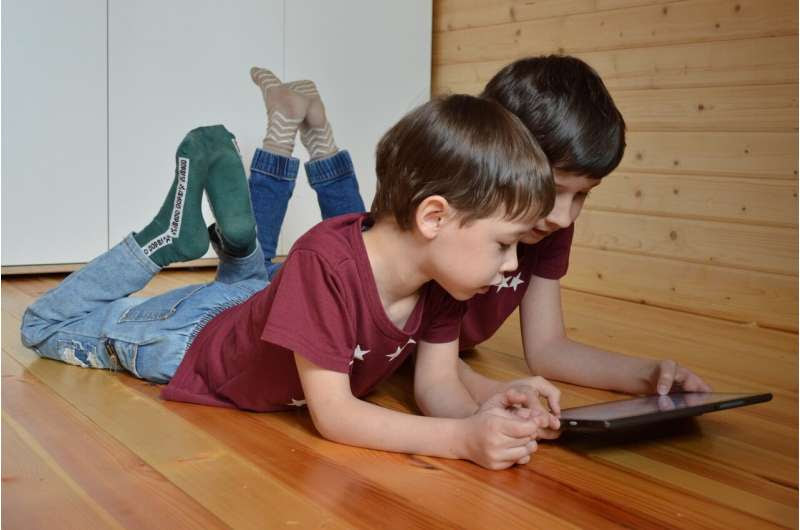by University of Helsinki

Credit: Pixabay/CC0 Public Domain
According to a study recently completed at the University of Helsinki, the amount of screen time is linked to language development in children. It was found that the more time preschool-aged children spend alone in front of screens, the poorer their lexical skills and general language level.
“We also found that the more screen time mothers had, the narrower the vocabulary used by the children and the poorer their language ability on a general level. A negative association with vocabulary and general language ability was stronger if both the child and mother spent a lot of time independently using devices,” says speech and language therapist and Doctoral Researcher Riikka Mustonen from the Department of Psychology and Logopedics at the University of Helsinki.
The researchers examined the correlation between screen time spent alone or together with the parent, and different domains of language in children between 2.5 and 4 years of age. Finnish-speaking children who did not have any neurological diagnoses were enrolled for the study. In addition, the researchers investigated the connections between mothers’ screen time and the language development of children. In the study, screen time denoted any time spent in front of televisions, game consoles, computers, smart phones and tablets.
“We were interested in how much the screen time of children or mothers explains the variation in children’s language skills when the child’s age, the mother’s educational level, and the birth order of the children in the family are taken into consideration,” Mustonen says.
The amount of children’s and mothers’ screen time was determined with a questionnaire. Children’s lexical skills, skills related to language structure, speech comprehension and the general language level were investigated through various tests. A total of 164 children and their mothers participated in the study. On average, the children spent 79 minutes per day on their devices, of which 44 minutes were spent alone and the rest with the parent. The average screen time for mothers was 5.5 hours per day, including time spent at work.

Standardized Beta-values of the screen time variables from the regression models for the dependent variables FinCDI III Words (score of vocabulary section of Finnish version of MacArthur Communicative Development Inventories III; (A) and FinCDI III Total score (B). A negative value indicates a negative association between the screen time variable and the language skill. The blue bars represent children’s screen time, and the orange bars represent mothers’ screen time. The last two Beta-values at the bottom of the charts represent the results from the combined models (including both the screen time of children alone and the screen time of mothers). Children’s age, maternal education level, and birth order were controlled for in all models. * p < 0.05; ** p < 0.01. Credit: Children (2022). DOI: 10.3390/children9101577
Joint discussion supports language development
At first, it appeared that screen time spent together can have a positive effect on the child’s vocabulary and general language ability. However, taking the background variables of the subjects into account, the connection was no longer significant.
According to Mustonen, time spent together with the parent can, however, be useful for language development if the parent and the child discuss the digital content with each other. Previous studies have shown that moments of joint attention are important to children’s language development.
“These shared moments may become less frequent if the child or parent spends a lot of time in front of a screen. In other words, the screen time spent alone by preschool-aged children should be restricted. Parents should also consider their habits in terms of whether screen time disturbs interaction with their children,” Mustonen says.
Mustonen points out that screen time is only one factor among many that can affect children’s language development.
“More research-based knowledge is needed on the effects of screen time. It should be kept in mind that language development is also affected by many other environmental factors, as well as genes in smaller children in particular.”
The study is published in Children. According to Mustonen, the results of the study can be utilized in the work of speech and language therapists and, for example, nurses at maternity and child health clinics. When the language development of children does not progress as usual, research-based knowledge helps to support families in the best possible way.

Leave a Reply